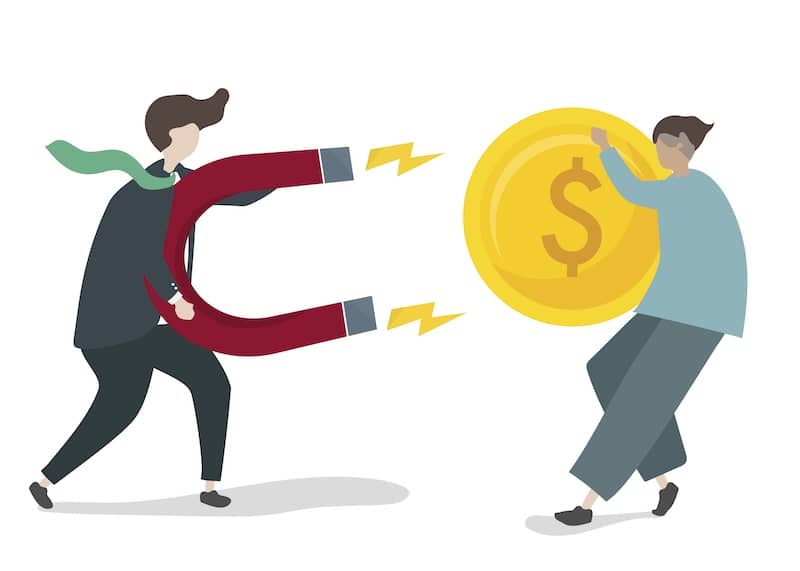In October of 1980, The Conference Board (the business and economics organization focused on corporate governance, HR, business ethics, global corporate citizenship and corporate performance) held a conference titled “Marketing Under Economic Adversity.” The title is apt for today as we are experiencing enormous economic and fiscal uncertainty. There appears to be declining consumer sentiment. Consumers are changing shopping behaviors, cutting back on more conspicuous consumption products. Prices are on the rise to cover the costs of tariffs. Used cars are increasingly popular again.
Brands are cutting back as well. Hasbro is eliminating 3% of its workforce. Amazon’s CEO told employees that AI would create a smaller workforce. The New York Times carried a story on potential new “human” jobs that AI might create while AI wipes out other jobs. Peloton is on its fourth CMO as Peloton’s marketing budget contracts. Threats of tariffs are affecting supply chains. Prices are rising, even at Walmart and its sibling Sam’s Club. The Wall Street Journal tells us that Sam’s Club is currently assessing “… which products it will raise prices on to offset higher costs from the Trump administration’s new tariffs, with candidates ranging from small kitchen appliances to outdoor decor such as yard art.”. Et Mon Dieu, Moët Hennessey is “… cutting 13% of its workforce as Champagne and Cognac sales fall” according to Bloomberg BusinessWeek.
This article is part of Branding Strategy Insider’s newsletter. You can sign up here to get thought pieces like this sent to your inbox.
Some marketers believe that hard times are the times for a hard sell, defined as shouting maximized performance, minimized price, or both. Deals! Yes!
This is not the way to sell, especially in periods of unpredictability and changeability. Shouting maximized performance or minimized price or both is limiting and misleading. In adverse, precarious times, it is not about selling: it is about buying. Let’s be clear: unless marketers can generate buyers, there will not be any selling.
No matter how unsettled the environment, people do not buy on price and performance alone. They buy on value. It is an everyday truth: the best value wins. Value is a virtue. But brands do not just wake up one day and have perceived brand value. Brand leaders must develop and implement strategies for generating brand value.
Customer-perceived brand value is already necessary for brand consideration, preference, and purchase. In our turbulent economy, the goal of every marketer is to build exceptional value and extraordinary quality at a great price. For marketers to generate buying, the goal must be an irresistible, trustworthy brand value.
Example? The increased popularity of hybrid vehicles. Hybrid vehicles have great mileage, use batteries successfully, especially under 40 mph and above 70 mph. EVs have all sorts of issues, not the least of which is the non-availability of charging stations.
Here is the basic definition of customer-perceived value: value is what you expect to receive, and what you do receive, for what you expect to pay, and do pay. We all have a mental value equation when we make a purchase. A consumer’s value equation is not math: it is a mindset. A customer’s value equation is a mental process of evaluating an offering relative to its costs. However, over the decades, the consumer’s value equation has evolved from product or service for the price.
People assess a brand’s worth based on the total brand experience they receive (functional benefits, emotional and social rewards) relative to the total costs (money, time, and effort). But, there is an essential new component to the equation. It is a value multiplier, and that multiplier is trust. Trust is the consumer’s belief that the brand will deliver the experience relative to the costs.
The new mental model of value is total brand experience relative to total experience costs, all multiplied by trust. This is today’s new Trustworthy Brand Value equation. This must be marketers’ focus. Success in troubled times requires creating and implementing a trustworthy brand value strategy right now. This is how to create buying, so there is selling. The threat and consequences of our current uncertainty and financial concerns may change people’s behavior and habits. But, changed behaviors and new habits will not decrease the importance of value. Value does not vanish due to volatility. Trustworthy Brand Value is vital for a brand’s enduring, profitable growth.
Trust is the consumer’s evaluation of a future experience with the brand: How confident am I that this brand will deliver this experience for these costs? If trust in the brand is high, then as a multiplier, the perceived brand value is increased. If trust in the brand is low, then the perceived brand value is decreased. If there is no trust in the brand, if trust in the brand is zero, then it does not matter what the promised brand experience is relative to the costs; anything multiplied by zero is zero. (And, PS, the new human jobs AI will possibly generate as described in The New York Times are mainly about trust. Apparently, there are reasons to distrust the information AI generates.)
Years of data support the point that credibility or expertise will not matter if there is zero trust. Brand trust significantly affects consumer commitment, which influences price tolerance. Brand trust is a critical piece of the decision-making process. If you want a strong, enduring, loyal relationship with a customer, you must have brand trust. Trust is essential to the calculative process of brand acceptance.
What to do?
Here are seven marketing actions for navigating in adverse, uncertain times:
1. Do not confuse price and value. Many marketers continue to use these terms interchangeably. Price is what marketers charge for an offer. Trustworthy Brand Value is what customers perceive an offer to be worth. A sign of troubled marketing is defining value as merely low price. Do not reference a particular brand as a “value brand.” Each brand must be a value brand. Each brand is valued for different reasons. Price is important. However, a brand’s worth depends on a lot more than price. Value can happen at any price point. No one wants a bad value. Value is in the eye of the customer: every customer is value-conscious.
2. Maintain relative price. Do not increase price in the hopes of making up for lost sales or higher sunk costs. Avoid this losing strategy that sacrifices long-term value creation. Do not focus on deals: deals destroy brand loyalty. Deals decrease price elasticity. Right now, many consumer brands have raised price significantly. At some point, consumers may no longer see the value in paying over close to $7 for a box of cold cereal or a bag of granola. On the other hand, mobile phone service carriers are providing deals that basically give the customer a new phone for free. According to Barron’s, the financial newspaper, PepsiCo’s snack sales are suffering in part because “Pepsi raised prices too much over the past few years…” while shrinking the portion sizes. Barron’s also points out PepsiCo’s efforts appear to be “… very near-term oriented.” One analyst told Barron’s that PepsiCo’s strategy will probably help margins but not solve PepsiCo’s top-line issues.
3. Make sure that your brand’s customer-perceived value is seen as a fair value for the promised experience. Marketers do not determine fair value. Customers do. Marketers set price. Consumers decide fair value: is this brand a fair value relative to competitive alternatives that I am considering? As The Wall Street Journal pointed out during the price hikes stimulated by COVID-19, many consumers bought whole chickens at $1.56 per pound rather than spend $4.26 per pound for boneless, skinless chicken breasts. These consumers found the price of pre-cut, pre-skinned chicken breasts a poor value relative to cutting the chicken themselves. It was, and still is, a factor in the sales of meatless protein alternatives. Store brands are seeing a revival.
4. Focus on maintaining and maximizing Trustworthy Brand Value, not merely messaging. Do not allow marketing to focus solely on how to best communicate with customers, when to communicate with customers, and across which devices. Brand management is not message management. Brand management is much more than brand messaging. Creating and strengthening Trustworthy Brand Value is the goal of the business, not just finding the perfect messaging and media. Trustworthy Brand Value is not just for marketers. Finance, legal, sales, HR, IT and all other functions have a role to play.
5. Create and implement a Plan to Win. A Plan to Win aligns the entire enterprise around creating and strengthening Trustworthy Brand Value. A Plan to Win puts the brand’s purpose, its promise, its five must-do actions (people, product, place, price, promotion) and its brand performance metrics on a single page. A Plan to Win is a brand-business roadmap for aligning all business units around the same goals, actions, and measures. Create cross-functional teams. The Wall Street Journal points out in a very long, analytic story that many companies are cutting workforces to become nimbler and more efficient. However, without cohesion and alignment, the size of the workforce is irrelevant. If your teams are not aligned, going in different directions with different actions, even small teams will inefficient and ineffective. If your teams are aligned and positive about common goals, then the work becomes more effective and efficient.
6. Maintain or increase product/service quality. Cutting quality to reduce costs is wrong. Data show there is better return on investment performance after bad times if a brand maintains quality. Value-added is an advantage. A strong value-added brand is the best defense in worrisome times. If you have stayed at a hotel recently you may have noticed that that hotels are increasing room rates while not increasing the service experience. This is not the way to market during adversity.
7. Defend the profitable business that you already have. It is risky to focus on new products at the expense of beloved, existing brands. Focus on the business you do have before focusing on the business you do not have. Love the customers who already love your brand. For whatever strategic reasons or lack of interest or profitability, McDonald’s pulled the plug on its off-shoot, CosMc. During the CosMc lifespan, coincidentally, the brand McDonald’s started losing its core customer base. The same thing happened in the early 2000’s when McDonald’s focused on its “partner brands” (Donato’s pizza, Chipotle and Boston Chicken).
The time to guard against a recession, inflation, or tanking customer sentiment is before any of these calamities start. Troubled times are trouble, but trouble for some does not mean trouble for everyone. Do not just accept trouble; create trouble for others. Build and nurture your brands because your brands are your consumer protection. Your brands are a trust assurance policy for the consumer. “Troubled times” is not the threat; troubled marketing thinking is the threat.
Contributed to Branding Strategy Insider by: Joan Kiddon, Partner, The Blake Project, Author of The Paradox Planet: Creating Brand Experiences For The Age Of I
At The Blake Project, we help clients worldwide, in all stages of development, define and articulate what makes them competitive at pivotal moments of change. This includes pricing strategies that propel their businesses and brands forward. Please email us to learn how we can help you compete differently.
Branding Strategy Insider is a service of The Blake Project: A strategic brand consultancy specializing in Brand Research, Brand Strategy, Brand Growth, and Brand Education
Post Views: 44








